第60章 CHAPTER XVII. ADVENTURE AND ENTERPRISE.(3)
It is impossible to dismiss this brief sketch of French balloonists of this period without paying some due tribute to M. Depuis Delcourt, equally well known in the literary and scientific world, and regarded in his own country as a father among aeronauts. Born in 1802, his recollection went back to the time of Montgolfier and Charles, to the feats of Garnerin, and the death of Madame Blanchard. He established the Aerostatic and Meteorological Society of France, and was the author of many works, as well as of a journal dealing with aerial navigation. He closed a life devoted to the pursuit and advancement of aerostation in April, 1864.
Before very long, events began shaping themselves in the political world which were destined to bring the balloon in France into yet greater prominence. But we should mention that already its capabilities in time of war to meet the requirements of military operations had been scientifically and systematically tested, and of these trials it will be necessary to speak without further delay.
Reference has already been made in these pages to a valuable article contributed in 1862 by Lieutenant G. Grover, R.E., to the Royal Engineers' papers. From this report it would appear that the balloon, as a means of reconnoitring, was employed with somewhat uncertain success at the battle of Solferino, the brothers Godard being engaged as aeronauts. The balloon used was a Montgolfier, or fire balloon, and, in spite of its ready inflation, MM. Godard considered it, from the difficulty of maintaining within it the necessary degree of buoyancy, far inferior to the gas inflated balloon. On the other hand, the Austrian Engineer Committee were of a contrary opinion. It would seem that no very definite conclusions had been arrived at with respect to the use and value of the military balloon up to the time of the commencement of the American War in 1862.
It was now that the practice of ballooning became a recognised department of military manoeuvres, and a valuable report appears in the above-mentioned papers from the pen of Captain F. Beaumont, R.E. According to this officer, the Americans made trial of two different balloons, both hydrogen inflated, one having a capacity of about 13,000 cubic feet, and the other about twice as large. It was this latter that the Americans used almost exclusively, it being found to afford more steadiness and safety, and to be the means, sometimes desirable, of taking up more than two persons. The difficulty of sufficient gas supply seems to have been well met. Two generators sufficed, these being "nothing more than large tanks of wood, acid-proof inside, and of sufficient strength to resist the expansive action of the gas; they were provided with suitable stopcocks for regulating the admission of the gas, and with manhole covers for introducing the necessary materials."
The gas, as evolved, being made to pass successively through two vessels containing lime water, was delivered cool and purified into the balloon, and as the sulphuric acid needed for the process was found sufficiently cheap, and scrap iron also required was readily come by, it would seem that practical difficulties in the field were reduced to a minimum.